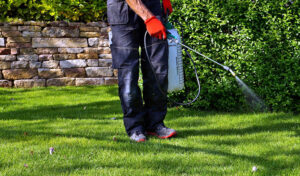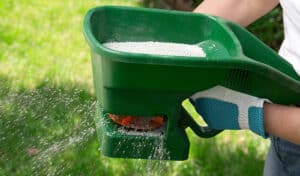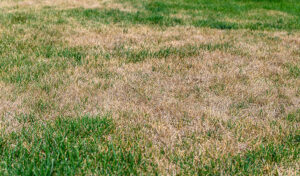As the chill of winter sets in, we’re not the only ones seeking the cozy warmth and shelter of our homes. Various unwelcome winter bugs, from crafty rodents to elusive spiders, may also seek refuge from the cold this season.
While it’s natural for these winter bugs to seek warmth, their presence in our living spaces can lead to health risks and property damage. Understanding the most common winter pests, their behaviors, and effective prevention strategies is crucial to keep bugs out of the house this winter.
In this comprehensive guide, we’ll explore the top winter bugs that invade homes and provide expert tips on fortifying your living spaces against these intruders. Let’s delve into winter pest prevention and ensure your home remains a comfortable haven during the colder months.
Winter Pest Behavior
The temperature drop and harsh outdoor conditions drive many winter bugs to seek refuge during winter. Our homes offer what these creatures desperately need: warmth, food, and protection from the elements. This seasonal migration into human habitats is primarily driven by the following factors:
- Seeking warmth: Many winter bugs cannot survive the cold temperatures outside. Your home’s warmth is as inviting to them as it is to you, making it a prime target for infestation.
- Searching for food: Food sources become scarce outdoors in winter. Pests like rodents, ants, and cockroaches are drawn to the readily available food in our homes.
- Protection from predators and the elements: Our homes provide a haven from predators and harsh weather conditions, offering winter bugs a secure environment to live and reproduce.
- Survival and reproduction: Some winter bugs, like certain spider species or cluster flies, instinctively move indoors to survive the winter and maintain their lifecycle.
When pests enter homes during winter, they seek specific habitats that meet their survival needs. They look for warm, hidden spaces that are near food sources. You’ll often find them in dark, moist areas, near fabric or wood, or high corners or ceiling joints.
To keep bugs out of the house, you’ll need to remove these sources of shelter. We’ll talk more about that later in this blog.
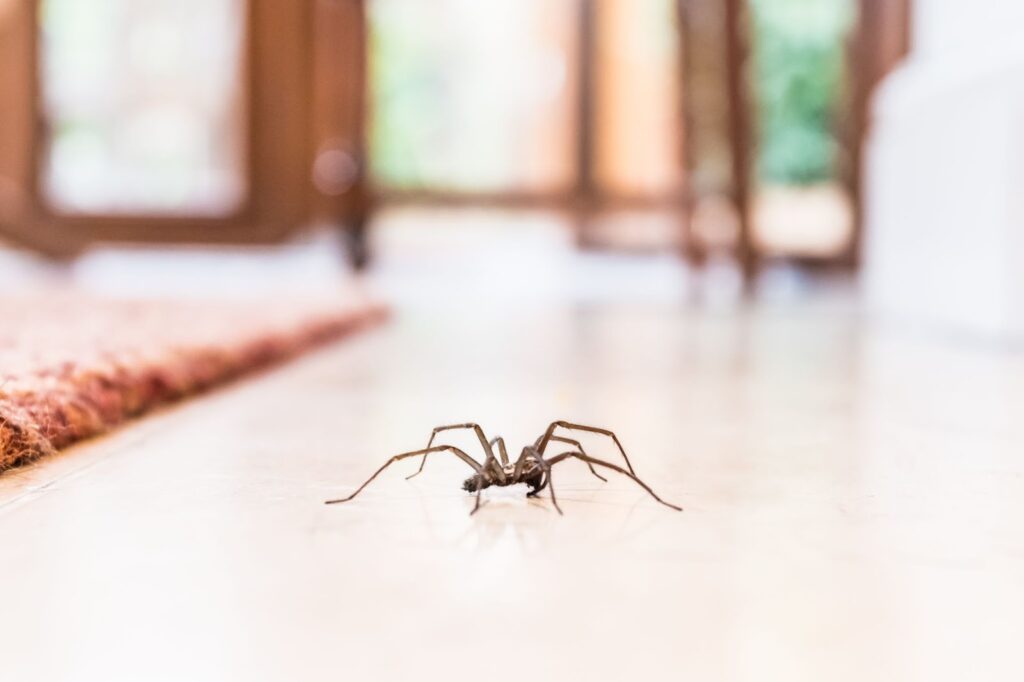
Common Winter Pests
Rodents
During the colder months, mice and rats are two of the most common rodents seeking refuge in homes. These small mammals look for warm places to nest and have easy access to food and water, making homes an ideal target.
Spiders
There are five types of spiders that you’re likely to encounter in your home this winter: house, cellar, wolf, jumping, and sac spiders.
House Spiders
House spiders are usually yellowish-brown, with an elongated abdomen, and can be up to ¼ inch long. They often have a patterned body with a few dark stripes meeting at an angle. You can find them in garage corners, basements, and attics. They are more of a nuisance than a threat.
Cellar Spiders
Cellar spiders have small bodies and very long, thin legs. They are pale yellow, light brown, or gray. They prefer dark, damp environments, so they often hide in basements, cellars, and crawl spaces.
Wolf Spiders
Wolf spiders are robust and patterned in shades of brown and gray. They are larger, with some species measuring over an inch in body length. Ground-dwelling spiders may enter your home through ground-level doors, windows, or other openings.
Wolf spiders do not create webs; they are hunters. They are not aggressive toward humans but will bite if threatened. Their bite is venomous but not lethal.
Jumping Spiders
Jumping spiders are small and compact with short legs and are known for their distinctive large front eyes and bright colors and patterns. They are active during the day and are often found near windows or sunlit areas. These spiders are curious and known for their jumping ability but are generally harmless to humans.
Sac Spiders
Sac spiders are only ½ inch long and are typically pale yellow, green, or tan. They prefer corners of ceilings, walls, or other high, undisturbed areas. They are nocturnal and often go unnoticed. Their bite might be painful and cause mild skin irritation or allergic reaction, but it is generally not dangerous to humans.
Cockroaches
Cockroaches are known for their hardiness and adaptability, making them particularly effective at surviving in various environments during winter.
As cold-blooded insects, cockroaches cannot regulate their body temperature internally. When outdoor temperatures drop, they instinctively seek warmer environments to survive. Our homes provide the perfect refuge with consistent warmth and protection from the elements.
Once inside, cockroaches establish infestations quickly. They are nocturnal and elusive, often going unnoticed while they breed and spread. Homes provide ample hiding spots for these pests, such as cracks, crevices, behind appliances, and wall voids.
Cockroaches are a nuisance that poses several health risks. They spread bacteria and pathogens by contaminating food and surfaces. They are also known to trigger allergies and asthma, especially in children, due to their shed skin and droppings.
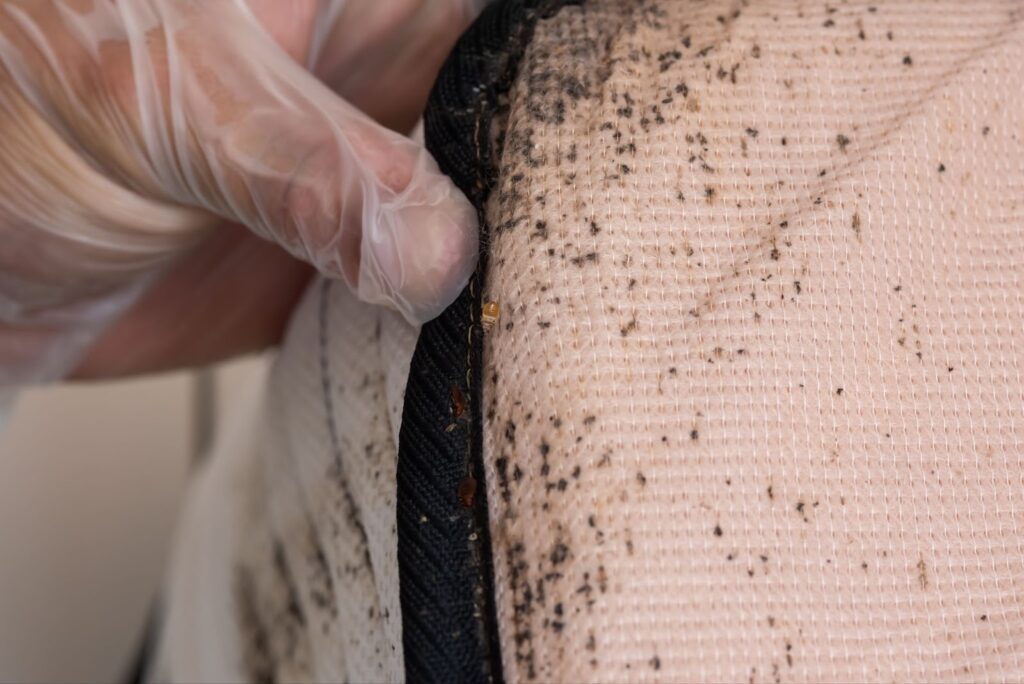
Bed Bugs
Contrary to what many might think, bed bugs do not have a seasonal preference like some other pests. Their activity in homes during the winter can be as prevalent as in warmer months, primarily due to the consistent indoor temperatures provided by heating systems. Here’s what you should know about bed bugs in the winter:
Bed bugs are indoor pests; they don’t live outdoors. So, their presence in homes during winter isn’t a matter of them coming in from the cold but being brought in unknowingly through luggage, furniture, clothing, or other items. Once inside, they find hiding spots close to where people sleep or rest, like beds, couches, and other furniture.
Bed bugs will survive and remain active year-round as long as they have access to a host for feeding. They are not deterred by winter and continue their usual cycle of feeding and reproducing in heated indoor environments.
They can survive several months without feeding, so even unoccupied homes can harbor bed bugs for extended periods.
Ants
While ants are typically more active outdoors during warmer months, they are still problematic in homes during winter. Their behavior and reasons for invading homes during the colder season differ slightly from their summer activities.
As temperatures drop, ants’ natural outdoor habitats become inhospitable. They seek shelter in warmer environments, and homes provide an ideal refuge with consistent temperatures conducive to survival. Some species of ants will establish a colony inside the walls or foundations of homes to stay warm and protected.
Prevention Strategies
1. Sealing Entry Points
Regularly check for cracks, holes, and gaps in the foundation or walls and around windows and doors. Don’t forget to inspect areas where utilities and pipes enter the home.
Seal any openings with caulk, especially around window frames and doorways. Use expandable foam or wire mesh for larger gaps, especially in areas like the attic or basement.
Place door sweeps on the bottom of doors to prevent pests from crawling underneath. Ensure window and door screens are intact and repair any tears.
Install covers on vents and chimneys to prevent larger pests like rodents from entering.
2. Proper Food Storage
Store pantry items such as grains, cereals, flour, and sugar in airtight containers to deter pests like ants and pantry moths. Keep perishable food items in the refrigerator when not in use. Ensure that your kitchen garbage has a tight-fitting lid and is emptied regularly. Store pet food in sealed containers and avoid leaving pet food dishes out overnight.
3. Reducing Moisture
Repair any leaking pipes, faucets, and appliances. Use dehumidifiers in damp areas of the home, like basements and crawl spaces. Ensure bathrooms, kitchens, and laundry areas are well-ventilated to reduce humidity. Regularly check for and eliminate any sources of standing water in and around your home.
Regular Cleaning and Decluttering
Keep your home, especially the kitchen and dining areas, clean and free of food crumbs and spills. Reduce clutter where pests can hide. Regularly clean under and behind furniture and appliances. Empty trash bins frequently and clean them thoroughly. Regular vacuuming helps remove pests and their food sources.
Pest-proofing Tips
Keep bushes, shrubs, and tree branches trimmed back from the exterior of your home.
Ensure your property is properly graded and drains water away from the foundation. Keep firewood off the ground and away from your home to prevent attracting pests like termites and rodents.
Before the change of each season, do a thorough check and maintenance of your home to address any pest vulnerabilities. Check out this blog for more comprehensive winter bug prevention tips.
Ready to Winter-proof Your Home against Pests? Summit Lawn & Pest Control is here to Help!
Don’t let winter pests turn your cozy retreat into their own. If you’re facing an uphill battle against these seasonal invaders, remember, you’re not alone. Summit Lawn & Pest Control is your ally in the fight to keep bugs out of the house.
Our expert team has the knowledge, tools, and experience to tackle any pest challenge, ensuring your home stays safe and comfortable all winter.
From sealing entry points to implementing comprehensive pest-proofing strategies, we offer a range of services tailored to your unique needs.
Whether you face rodents sneaking into your attic or spiders taking refuge in the corners of your home, we have the solutions to keep them at bay. Don’t wait for the problem to escalate — take action now and enjoy a pest-free winter.
Contact Summit Lawn & Pest Control today and set the stage for a peaceful, pest-free season. Your home deserves the best protection; we’re here to provide it. Let’s team up to keep those winter pests where they belong — outside!



